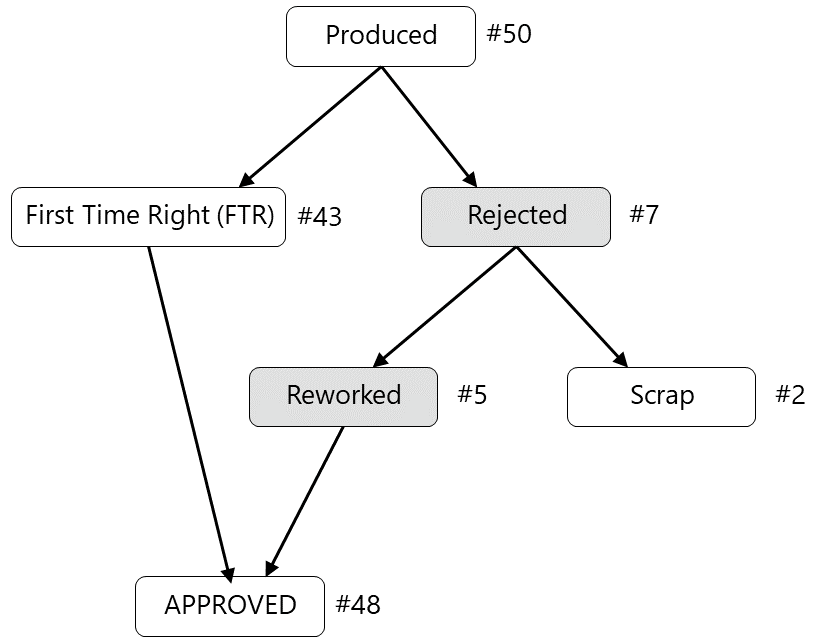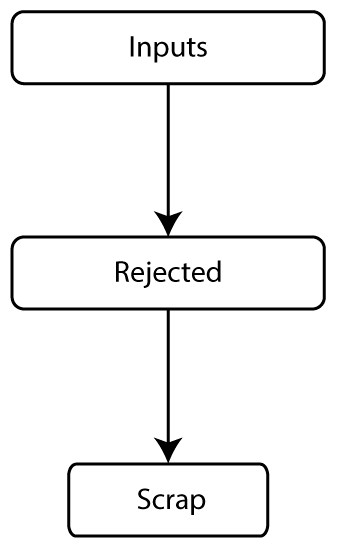Reject and rework
Besides discovering the reasons for the loss of availability and performance, it is also very important to recognize the reasons for quality losses. In addition to automatic capturing of data on quality and the rejections based on that, the operator's input in resource view is also an important source of information.
Also in this respect Objective offers the possibility of conducting an extended analysis, which will provide opportunities for improvement.
Not only does Objective make it possible to conduct an analysis of the causes/reasons for quality losses, it also offers the opportunity to combine them with other parameters, such as:
- In which department?
- On what machine?
- By which employee(s)?
- On which production order?
- During which operation?
- For what recipe?
- For what item?
- ...
Example: 50 items are produced. 43 of the 50 items immediately meet the set quality requirements (FTR = First Time Right). There are 7 out of the 50 items that do not meet the set requirements. These items are rejected. Rejects can be part of the process and be registered automatically or rejects are performed manually by the operator.
In some production processes, rejected items can be reworked.
Example: Out of the 7 rejected items, 5 can be reworked into items complying with the quality requirements.


Not only produced items (outputs) but also inputs can be rejected. When rejecting, a reject reason must be provided. Rejections are done by the operator. When rejecting inputs no Rework is currently possible in Objective. A rejected input can only be registered as Waste.
When the operator removes components from a product passport, a reject reason is asked. For example: for the assembly of a computer (output), motherboards, hard disks,... are used as inputs. The unsatisfactory motherboards (input) may be rejected.
It is currently not possible to reject components in KIT orders.
The reject registrations are always related to predefined reject reasons which determine if the produced goods are definitively rejected (scrap) or possibly reworkable (possibly with intermediate inspections).
The reworkable goods can be reworked inline or can be collected on separate carriers to be reworked at a later time.
The reject and rework flows offer support for both serial number and non-serial number verified items.
